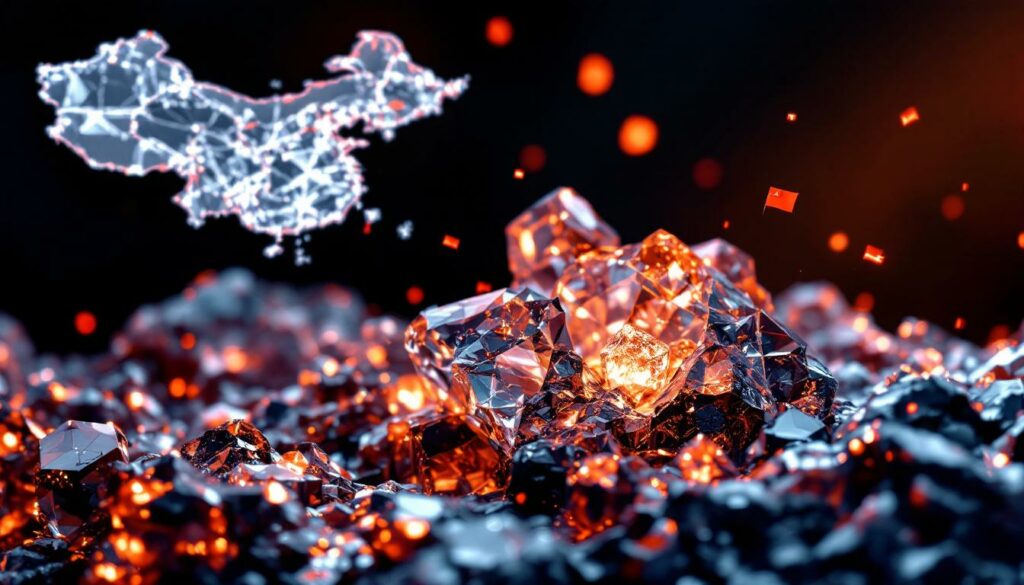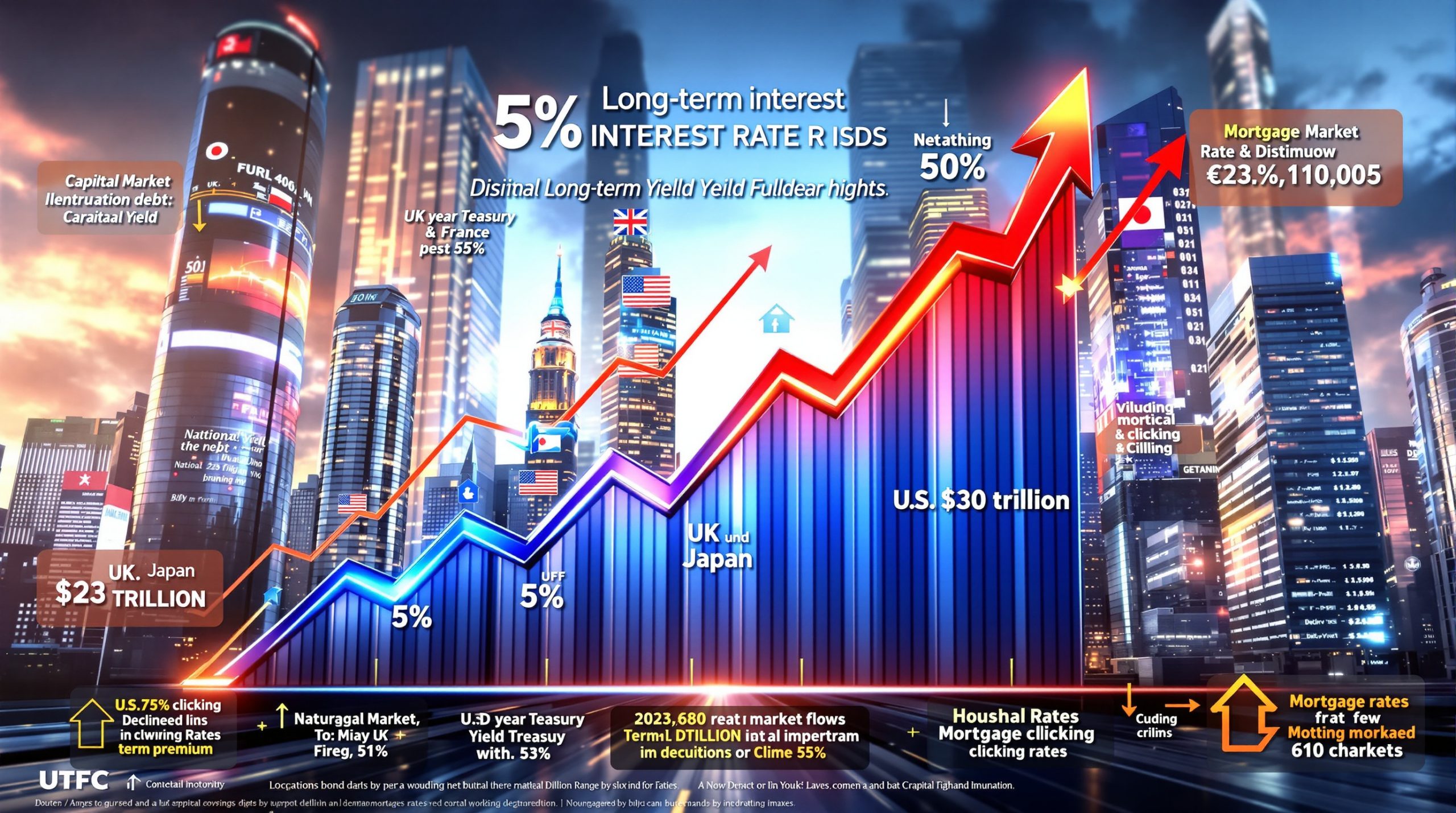Antimony in the ASX Market: Strategic Opportunities and Investment Landscape
The global market for antimony has undergone significant transformation in recent years, with growing recognition of its strategic importance and vulnerability to supply disruptions. For investors on the Australian Securities Exchange (ASX), antimony presents a unique opportunity to gain exposure to a critical mineral with substantial growth potential across multiple industries.
What is Antimony and Why Does It Matter?
Understanding Antimony's Properties and Composition
Antimony (Sb) is a brittle, silvery-white metalloid that occupies a distinct position on the periodic table between metals and non-metals. With atomic number 51 and a melting point of approximately 630°C, antimony exhibits both metallic and non-metallic characteristics that make it valuable across diverse applications.
In nature, antimony primarily occurs as stibnite (Sb₂S₃), a sulfide mineral with distinctive lead-gray crystals that frequently form in volcanic or hydrothermal environments. Interestingly, these deposits commonly occur alongside gold mineralization, creating natural synergies for mining operations that can extract both elements from the same ore bodies.
Archaeological evidence reveals antimony compounds have been used for over 5,000 years, with ancient Egyptians utilizing antimony sulfide (kohl) as eye makeup and Mesopotamian civilizations incorporating it into bronze production to increase hardness.
Antimony's Critical Mineral Classification
The strategic importance of antimony has received formal recognition from governments worldwide. In 2018, the U.S. Department of Interior published its first critical minerals policy, prominently featuring antimony due to its essential applications in defense systems and limited domestic production capabilities.
Australia's Critical Minerals Strategy similarly identifies antimony as a priority resource, with the government establishing a A$2 billion Critical Minerals Facility in 2022 to support development of domestic supply chains. This classification isn't merely bureaucratic – it translates directly into tangible support mechanisms for companies developing antimony resources.
"Antimony's designation as a critical mineral by multiple Western governments represents a fundamental shift in how these nations approach resource security. This isn't simply about economic value – it's about critical minerals energy security in an increasingly uncertain geopolitical environment." – Australian Strategic Policy Institute
How is Antimony Used in Modern Industries?
Flame Retardant Applications (50% of Global Demand)
The largest consumption category for antimony is flame retardants, which account for approximately half of global demand. Antimony trioxide (Sb₂O₃) functions as a synergist that dramatically enhances the effectiveness of halogenated flame retardants through a complex gas-phase combustion inhibition mechanism.
When exposed to heat, antimony trioxide reacts with halogen sources to form antimony trihalides and oxyhalides, which interfere with the combustion process by trapping free radicals and preventing chain reactions that sustain fires. This chemical behavior makes antimony-containing flame retardants significantly more effective than alternatives at preventing or delaying ignition.
Industries relying on these compounds include:
- Building materials (insulation, wiring, plastics)
- Transportation (aircraft, automotive, rail)
- Electronics (circuit boards, casings)
- Textiles (upholstery, carpeting, protective clothing)
The implementation of stringent fire safety standards across developed economies ensures steady demand growth in this sector, with annual increases of 3-5% projected through 2030.
Battery Technology (30% of Global Demand)
Lead-acid batteries represent the second-largest application for antimony, consuming approximately 30% of global supply. Within these batteries, antimony alloyed with lead creates stronger, more corrosion-resistant grids while improving charge acceptance and cycling performance.
Despite the growing prominence of lithium-ion technology, lead-acid batteries maintain dominance in several critical applications:
- Automotive starting, lighting, and ignition (SLI) batteries
- Industrial standby power systems
- Telecommunications backup
- Off-grid energy storage
- Material handling equipment
The durability, reliability, and established recycling infrastructure for lead-acid batteries ensure continued demand for antimony in this sector, with over 99% of automotive lead-acid batteries being recyclable and providing a significant secondary source of antimony.
Military and Defense Applications
Antimony's role in national security extends far beyond its general industrial applications. The element serves as an irreplaceable component in numerous defense systems, including:
- Infrared detection and targeting systems that utilize antimony-based semiconductors
- Night vision technology leveraging antimony's unique electronic properties
- Thermal batteries powering guided missiles and precision munitions
- Armor-piercing ammunition utilizing antimony for hardening
- Ballistic protection systems for vehicles and personnel
These specialized applications, while representing a smaller percentage of total antimony consumption (approximately 5-7%), carry outsized strategic importance. Military specifications often require high-purity antimony that commands premium pricing, creating attractive opportunities for producers capable of meeting these exacting standards.
Emerging Technology Applications
Beyond established uses, antimony is finding its way into cutting-edge technologies that could significantly expand demand:
- Liquid metal batteries: Companies like Ambri are developing grid-scale storage solutions using calcium-antimony electrodes, potentially requiring substantial antimony volumes as deployment scales
- Semiconductor manufacturing: Indium antimonide (InSb) serves as a key material in infrared detectors, quantum computing components, and specialized electronic applications
- Pharmaceutical applications: Antimony compounds show promise in treating parasitic diseases and certain cancer types, with ongoing research expanding potential medical uses
- Advanced ceramics: Antimony oxide improves thermal stability and electrical properties in specialized ceramics for telecommunications and aerospace
These emerging applications remain relatively small consumers currently but represent significant growth vectors as technologies mature and commercialize.
Why is Antimony Supply a Strategic Concern?
Global Production Concentration
The antimony in the ASX market faces exceptional supply concentration risk, with China controlling approximately 71% of global mine production as of 2024. This dominance creates fundamental vulnerability for Western industrial and defense sectors.
The current global production landscape reveals stark geographic imbalances:
| Country | Percentage of Global Production | Annual Output (tonnes) |
|---|---|---|
| China | 71% | ~110,000 |
| Russia | 8% | ~12,000 |
| Tajikistan | 7% | ~10,800 |
| Bolivia | 5% | ~7,700 |
| Myanmar | 3% | ~4,600 |
| Australia | <1% | ~1,500 |
| United States | 0% | 0 |
This concentration in regions with varying degrees of geopolitical alignment with Western nations creates substantial supply chain vulnerability for critical industries.
China's Strategic Control
China's dominant position in antimony production evolved through decades of strategic investment in mining operations and processing facilities. The country's Hunan and Guangxi provinces contain world-class antimony deposits that have been systematically developed since the 1970s.
China has demonstrated willingness to leverage its resource dominance for strategic advantage. In 2010, during tensions with Japan, China restricted rare earth exports, causing prices to increase tenfold. Similar actions could easily affect antimony markets, with potentially severe consequences for Western manufacturing and defense capabilities.
Recent policy signals from Beijing regarding "strategic minerals" have raised concerns about potential export quotas or tariffs on antimony. In March 2024, China's Ministry of Industry and Information Technology released draft regulations proposing new controls on various critical minerals, explicitly mentioning antimony among elements requiring "strengthened export management."
Price Volatility and Market Dynamics
Antimony pricing exhibits considerable volatility compared to many industrial metals. Unlike copper or aluminum traded on major exchanges with transparent price discovery, antimony transactions primarily occur through negotiated contracts between producers and consumers.
Historical antimony price ranges show extreme fluctuations:
- 2010-2011: Prices surged to US$15,000/tonne during Chinese export restrictions
- 2015-2016: Prices collapsed to US$5,200/tonne amid industrial slowdowns
- 2020-2021: COVID-related supply disruptions pushed prices to US$11,000/tonne
- Current (2025): Approximately US$28,000/tonne reflecting stockpiling activities and supply concerns
This pricing opacity and volatility create both challenges and opportunities for investors. Companies with secure offtake agreements or strategic antimony loan facilities may achieve significant price premiums for reliable supply from politically stable jurisdictions.
Which ASX Companies Offer Antimony Exposure?
Larvotto Resources (ASX: LRV)
Larvotto Resources represents one of the ASX's most advanced antimony opportunities through its flagship Hillgrove Project in New South Wales. This historically significant mining district has produced antimony intermittently since the 1870s but contains substantial unmined resources.
Key aspects of Larvotto's antimony position include:
- Hillgrove's Mineral Resource Estimate of 1.7 million ounces gold equivalent at 7.4 g/t AuEq represents Australia's largest antimony deposit and the 8th largest globally
- The project benefits from existing infrastructure including processing facilities, tailings storage, and grid power connections
- A Pre-Feasibility Study completed in August 2024 outlines annual production exceeding 80,000 ounces gold equivalent, with antimony constituting approximately 25% of projected revenue
- The company recently secured a strategic investment from a North American metals group specifically interested in securing antimony supply
Larvotto's advanced development timeline positions it as potentially the first significant new antimony producer in Australia, with production possible by late 2026 based on current permitting progress.
Trigg Minerals (ASX: TMG)
Trigg Minerals has assembled a portfolio of antimony-focused projects spanning multiple jurisdictions:
- The Achilles Project features the Wild Cattle Creek deposit containing 1.52 million tonnes at 1.97% Sb (approximately 30,000 tonnes of contained antimony), representing Australia's highest-grade undeveloped primary antimony resource
- Metallurgical testing demonstrates potential recoveries exceeding 92% using conventional flotation techniques
- The company's recently acquired Canyon Claim Block in Utah (USA) provides international diversification and exposure to the North American market
- Exploration programs at Taylors Arm and Spartan Projects in New South Wales target extensions of known antimony mineralization
Trigg's multi-jurisdiction approach provides investors with diversified antimony exposure while mitigating development and permitting risks associated with single-asset companies. According to a recent analysis, the company's strategic positioning in the antimony market could provide significant advantages as global supply concerns intensify.
Nagambie Resources (ASX: NAG)
Nagambie Resources controls an extensive 1,000 square kilometer tenement package in Victoria's historically productive antimony districts. The company's focus includes:
- Reprocessing historical mine tailings containing recoverable antimony values
- Defining new resources along known mineralized trends
- Leveraging modern exploration techniques to identify previously overlooked deposits
Recent technical reports indicate a maiden resource containing 17,800 tonnes of contained antimony alongside gold values, with significant expansion potential through ongoing drilling programs.
Southern Cross Gold (ASX: SXG)
While primarily focused on gold, Southern Cross Gold's Sunday Creek Project in Victoria has delivered exceptional antimony results that significantly enhance the project's economics:
- Recent drilling intersected a 135-meter-wide gold-antimony zone with assays reaching up to 31.5% antimony – grades that rank among the highest reported globally
- The company secured C$143 million in development funding from institutional investors, enabling accelerated project advancement
- Metallurgical testing demonstrates separate recovery streams for gold and antimony, maximizing value from both elements
The company's high-grade antimony intercepts represent some of the richest antimony mineralization reported globally in recent years, potentially positioning Sunday Creek as a significant antimony source as development advances. As noted by Stockhead, these extraordinary antimony grades could significantly enhance project economics beyond the gold values alone.
Iltani Resources (ASX: ILT)
Iltani's Herberton Project in Queensland targets a historically significant antimony district that produced high-grade ore during the early 20th century. Key aspects include:
- The Antimony Reward Deposit has delivered exceptional exploration results, with recent drilling confirming high-grade antimony mineralization with assays up to 17.3% Sb
- Nearby historical workings produced antimony grades exceeding 20%, suggesting potential for additional high-grade discoveries
- The project benefits from excellent infrastructure access with proximity to ports, rail, and processing facilities
The company continues systematic exploration to define the full resource potential of this historically significant antimony district, with an initial resource estimate anticipated in late 2025.
What Investment Considerations Apply to Antimony Projects?
Jurisdiction Risk Assessment
When evaluating antimony investment opportunities, jurisdiction risk represents a primary consideration. The Fraser Institute's Annual Survey of Mining Companies consistently ranks Australia among the world's most attractive mining jurisdictions, with New South Wales and Victoria scoring particularly well on policy perception and mineral potential.
Key jurisdictional advantages for Australian antimony projects include:
- Established regulatory frameworks with transparent permitting processes
- Strong rule of law protecting mineral rights and investments
- Sophisticated financial markets supporting resource development
- Government recognition of antimony's strategic importance
- Established infrastructure (power, water, transportation)
- Skilled workforce with extensive mining expertise
These factors potentially allow Australian projects to advance more rapidly than competitors in less stable jurisdictions, despite sometimes lower grades or higher operating costs.
Processing Capability and Metallurgical Considerations
Antimony processing requires specialized metallurgical expertise and facilities that create both challenges and barriers to entry. Unlike gold or copper, where processing technologies are standardized and widely available, antimony extraction often involves complex flowsheets addressing:
- Refractory behavior in certain ore types
- Presence of deleterious elements (arsenic, mercury)
- Variable mineralogy affecting recovery rates
- Smelting requirements for certain end products
Companies without established off-take agreements or refining partnerships may face challenges in commercializing their resources. Investors should evaluate whether companies have viable processing strategies through:
- Partnerships with existing refiners in Europe or North America
- Plans for on-site processing facilities
- Toll treatment arrangements
- Production of saleable concentrate vs. refined metal
Environmental Management Requirements
Antimony compounds can present environmental challenges if improperly handled, creating potential regulatory hurdles for project development. Responsible companies implement comprehensive management strategies addressing:
- Water quality protection through closed-loop processing systems
- Tailings management with appropriate containment
- Dust control measures during mining and processing
- Monitoring programs ensuring regulatory compliance
- Rehabilitation planning for post-mining land use
Projects demonstrating robust environmental practices typically face fewer permitting obstacles and community resistance. Companies incorporating best practices often command premium valuations due to reduced permitting risks and stronger ESG credentials.
Economic Viability Factors
Most antimony production historically occurs as a by-product of gold or silver mining rather than from standalone operations. This creates complex economic considerations when evaluating dedicated antimony projects:
- Capital requirements for dedicated processing facilities often exceed US$50-100 million
- Operating costs vary significantly based on mineralogy, processing methods, and infrastructure access
- Revenue projections must account for antimony's price volatility and market opacity
- Potential premium pricing for "secure" supply from stable jurisdictions
Companies must demonstrate compelling economics across various price scenarios to attract investment capital. Projects generating antimony as a by-product of precious metals often benefit from shared infrastructure and processing costs, improving overall economic resilience.
How Does Antimony Fit into Investment Portfolios?
Strategic Metal Exposure Benefits
Antimony offers investors exposure to a niche critical mineral market with fundamentally different drivers than mainstream commodities. Unlike iron ore, copper, or gold, antimony demand isn't primarily driven by general economic growth but by specialized industrial and defense applications.
This unique demand profile can provide portfolio diversification benefits through:
- Reduced correlation with broader commodity cycles
- Exposure to defense spending trends
- Participation in emerging technology growth
- Potential supply shortage premiums during geopolitical tensions
For investors seeking to construct resilient resource portfolios, a small allocation to antimony-focused companies can provide valuable diversification while capturing upside from growing strategic metal demand.
Government Support Potential
Companies developing antimony projects in Western jurisdictions may benefit substantially from government initiatives designed to secure critical mineral supply chains:
- The Australian Critical Minerals Facility offers loans and guarantees for projects advancing domestic processing capabilities
- The U.S. Defense Logistics Agency maintains antimony stockpiles and periodically issues purchase tenders
- NATO countries increasingly prioritize secure supply chains for defense materials
- Export finance agencies offer enhanced support for critical mineral projects
These support mechanisms can significantly de-risk project development through offtake guarantees, favorable financing terms, and accelerated permitting processes. Companies explicitly positioning their antimony resources as strategic assets may capture additional value through these programs.
Market Timing Considerations
Current geopolitical tensions and supply chain security concerns create a favorable environment for developing alternative antimony sources outside China. This timing advantage manifests through:
- Heightened investor awareness of critical mineral vulnerabilities
- Growing government support for domestic supply development
- Industrial consumers seeking supply diversification
- Potential premium pricing for non-Chinese antimony
Companies with advanced projects may benefit from these tailwinds, potentially commanding premium valuations as Western nations prioritize securing reliable antimony supplies for defense and industrial applications.
What Future Trends Will Impact Antimony Markets?
Want to Spot the Next Major ASX Mineral Discovery?
Don't miss potentially transformative investment opportunities on the ASX. Discovery Alert's proprietary Discovery IQ model provides instant notifications when significant antimony or other mineral discoveries are announced, giving you a critical market advantage. Explore historical examples of exceptional discovery returns at Discovery Alert's discoveries page.




